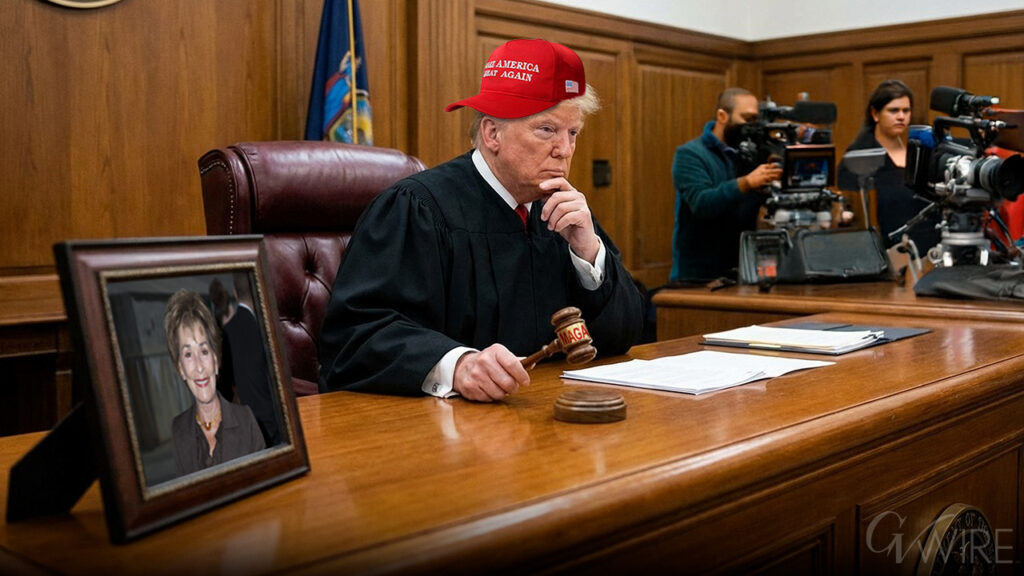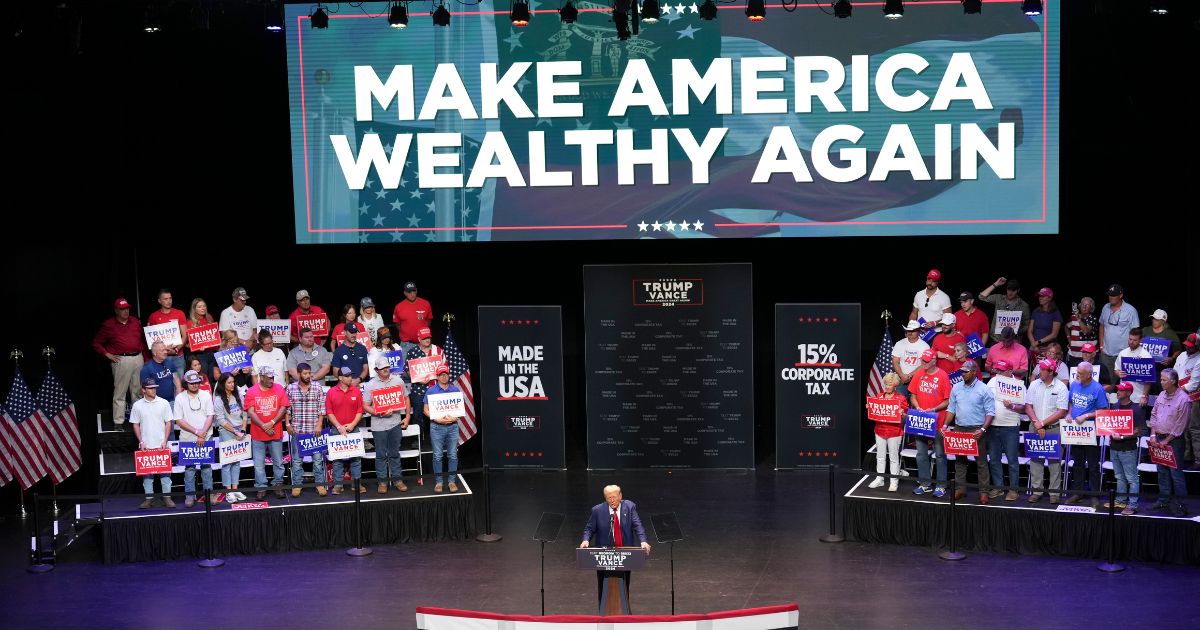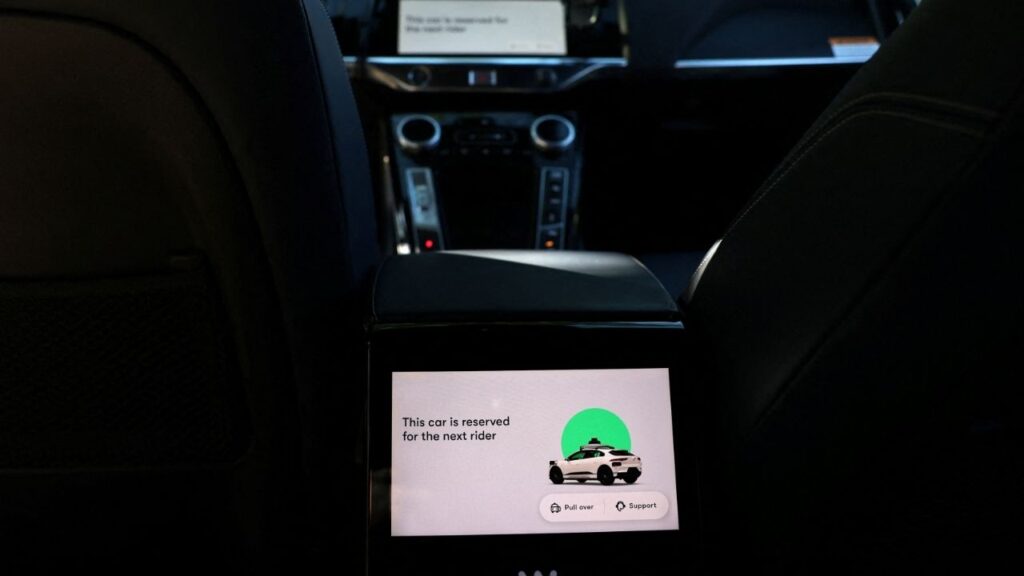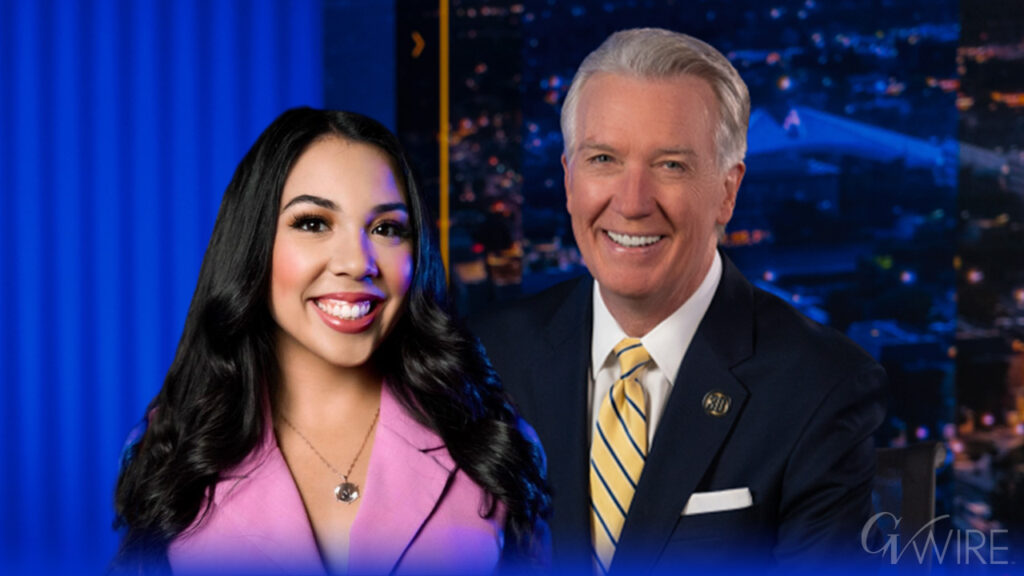Former President Donald Trump, the Republican presidential nominee, delivers remarks on his economic policy in Savannah, Ga., on Tuesday, Sept. 24, 2024. (Doug Mills/The New York Times)

- Trump promised tax breaks and federal land access to entice international companies to move manufacturing operations to the U.S.
- Trump’s vision includes creating jobs, raising wages, and revitalizing American manufacturing through tariffs and corporate tax cuts.
- Trump proposed high tariffs on Mexican cars, risking a trade dispute under the USMCA agreement, complicating U.S.-Mexico auto industry ties.
Share
SAVANNAH, Ga. — Former President Donald Trump pledged on Tuesday to lure other countries’ factories to the United States, promising to offer companies tax breaks and access to federal land if they moved their manufacturing operations.
In a speech in Savannah, Georgia, Trump said he would offer federal land “with ultra low taxes and regulations” to companies looking to relocate to the United States. He promised to speed up environmental reviews and cut through environmental regulations that he said curbed “mineral production and rare earth” — a reference to compounds often used in electronics and other goods.
And Trump promised to appoint a “manufacturing ambassador” who would try to persuade international companies to move their operations to America.
As he did during his presidency, Trump again offered a grand vision of an American manufacturing renaissance that would be ushered in through tariffs and tax breaks. But he did not acknowledge that many similar pledges he made as president to restore manufacturing jobs and investment did not always come to fruition.
Related Story: Newsom: I Can Work With Trump
Trump Said This Will Create Jobs
Trump said this “new American industrialism” would create jobs, raise wages and “make the United States into a manufacturing powerhouse like it used to be many years ago.”
Trump and his campaign are eager to focus the race on the economy, an area where they believe he holds an advantage over Vice President Kamala Harris. Polls have consistently shown voters ranking inflation, the cost of living and the economy as top issues in the election. Harris is expected to focus on the economy when she travels to western Pennsylvania on Wednesday.
Still, as is often the case, Trump deviated from his speech’s stated focus. He criticized President Joe Biden’s physical appearance and attacked Harris, saying she has “cognitive problems.” He continued to stoke fear around immigration, including with a baseless claim that other countries were deliberately sending prisoners to the United States and arguing that immigrants would “take over the whole damn state” of Colorado.
And against the backdrop of a U.S. visit by President Volodymyr Zelenskyy of Ukraine to address the U.N. General Assembly and to meet with Biden, Trump criticized the Biden administration’s support for Ukraine in its war against Russia.
“We’ve got to get out,” Trump said, before veering into Russian military history as he suggested Russia was likely to win the war. “They beat Hitler, they beat Napoleon. That’s what they do,” he said.
Many of Trump’s economic promises in Tuesday’s speech were pledges he made earlier this month, when he addressed business leaders at the Economic Club of New York. But in Savannah, Trump framed his proposals as an effort to help workers rather than drive corporate growth.
And building on his habit of making narrow promises tailored to specific groups, Trump said he would offer upgrades to Savannah’s port, “tripling and quadrupling” operations there.
Related Story: Trump Calls for 100% Tariffs on Cars Made in Mexico as Part of US Manufacturing ...
Trump Imposes Tariffs
Trump has suggested he might impose tariffs of as high as 20% on all U.S. imports, part of an effort to discourage companies from moving jobs abroad and to promote American-made products. Many economists believe his proposals might disproportionately burden lower-income Americans, since some goods would probably get more expensive.
On Tuesday, he promised to put a tariff of 100% or more on every single car coming across the Mexican border — a proposal that could violate the United States-Mexico-Canada Agreement negotiated by his administration.
Under the agreement, cars made in Mexico can be imported into the United States duty-free so long as they meet certain conditions for sourcing materials from North America. It is unclear what legal authority Trump might rely on to increase tariffs on Mexican cars, and doubling or tripling tariffs could also provoke a serious trade dispute with Mexico, which could impose its own tariffs on American products.
The U.S. and Mexican auto industries are highly integrated, with many parts and finished vehicles flowing both ways across the border. Mexico is the largest market for U.S. auto parts makers, and about three-quarters of the cars built in Mexico are exported to the United States.
Trump also on Tuesday said he would give American manufacturers “expanded research and development tax credits” and allow businesses to write off the cost of heavy machinery in the first year after it is purchased, an incentive to encourage manufacturing investments. And he repeated his pledge to lower the corporate tax rate to 15% from 21% for companies that make their products in the United States.
Related Story: Trump Shows Signs of Strength in Sun Belt Battlegrounds, Polls Find
When he was president in 2017, Trump cut the corporate tax rate from 35%, though he claimed repeatedly in Tuesday’s speech that it had been over 50%. Harris has proposed raising the rate to 28%.
Trump, who has promised a number of wide-ranging tax cuts, attacked Harris’ tax plans. He criticized her for not wanting to fully extend his administration’s tax cuts (though he at one point erroneously referred to them as “tax hikes”), which largely benefited wealthy people and corporations but included some reductions for low- and middle-income Americans.
Harris has said that she would keep those tax cuts in place for people earning up to $400,000 a year, but that she would raise rates for people who earn more. She has argued that wealthy Americans can afford to pay higher taxes to help support policies that benefit others.
Polls have shown an increasingly competitive race in Georgia, where Trump spoke on Tuesday. It is a crucial battleground state that was at the center of his efforts to overturn his 2020 election loss. A recent poll from The New York Times and Siena College found Trump with a slight lead over Harris among likely voters, 49% to 45%, but she has narrowed the lead Trump once held there over Biden.
–
This article originally appeared in The New York Times.
By Michael Gold/Doug Mills
c. 2024 The New York Times Company
RELATED TOPICS:
Categories

Casanova Is a Lover, True. But He’s Also Loyal and Calm

Tulare Police Warn of Scam Texts Impersonating Detectives

















